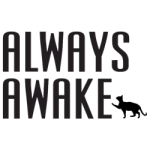
Education Evolved: How Digital Transformation is Shaping the Future of Learning
The dusty image of education – chalkboards, textbooks, and routine memorization – is fading fast. A digital revolution is sweeping through schools, propelled by cutting-edge technology. From interactive whiteboards lighting up classrooms to online platforms offering personalized learning, and home-based learning, this phenomenon, known as digital transformation in education, is fundamentally changing how we teach and learn.
Learning Goes Digital: A World of Possibilities
One of the most exciting impacts of digital transformation is the rise of dynamic learning environments. Education is no longer only provided in traditional classroom settings. Digital platforms are emerging as powerful partners, offering a treasure trove of resources and tools. Imagine multimedia presentations that bring history to life, interactive simulations that let you explore the human body, or virtual field trips that transport you to the Great Barrier Reef – all from your classroom (or even your living room!). With the use of these technological resources, teachers may produce captivating lessons that appeal to a variety of learning preferences and hold students’ attention.
Learning Tailored Just for You
Digital transformation isn’t just about fancy gadgets; it’s about empowering educators to personalize learning. Gone are the days of one-size-fits-all education. Through data analytics and AI, educators can gain valuable insights into how students learn best. Imagine having instant access to knowledge about a student’s learning preferences, areas of strength, and shortcomings. This allows teachers to tailor instruction, provide targeted support, and offer personalized feedback to help each student reach their full potential. Enhancing learning outcomes and strengthening a sense of ownership and engagement in the learning process are two benefits of this personalized approach.
Learning Without Borders
One of the most powerful aspects of digital transformation is its ability to break down geographical barriers, and this goes beyond distance learning. The constraints of physical location are being broken down by virtual classrooms and online learning environments. Students in remote areas or underserved communities, who might not have access to quality education traditionally, can now connect with top-notch learning resources. Digital technologies bridge the gap between urban and rural communities, democratizing access to education and creating a level playing field for all students.
Learning for Life
It is more crucial than ever to pursue lifelong learning in our knowledge-driven society. Beyond traditional classrooms, digital transformation offers a plethora of chances for lifelong learning and career advancement. Online courses, webinars, and digital resources empower individuals to acquire new skills, expand their knowledge base, and stay ahead of the curve. Whether you’re looking to upskill for a promotion or explore a personal passion, digital learning platforms provide flexible and accessible avenues for lifelong learning.
Challenges and the Road Ahead
While digital transformation offers a bright future for education, it’s not without its challenges. Issues like the digital divide, data privacy concerns, and ensuring equitable access to technology remain hurdles to overcome. Educators must also navigate the complexities of integrating technology effectively into teaching methods and fostering digital literacy among students.
The Future of Learning is Now
Digital transformation has fundamentally reshaped the education landscape, opening doors to innovation, inclusion, and progress. By embracing digital learning environments, personalizing instruction, breaking down barriers, and promoting lifelong learning, educators can empower students to thrive in a digital world. However, to fully realize this potential, a collaborative effort is needed. Stakeholders must work together to address challenges, bridge divides, and ensure technology serves as a catalyst for positive change in education. By working together, we can unleash the revolutionary potential of digital education and build a more promising future for all students.

